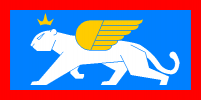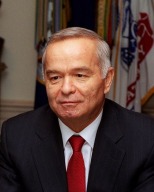IB Turkestan
The modern Ilxanate of Turkestan

Flag of the Ilxan of Turkestan
"Ilxan" (sometimes spelled "Ilkhan" in foreign media) is the title of the ruler of Turkestan. The title was a creation of the first Snorist ruler of the country, and was radically reinvented in the post-Snorist age as the title not of a dictator-for-life but of an elected monarch. There has only been one Ilxan so far since the Snorist EBÜK party/government apparatus was dismantled: the first elected Ilxan of Turkestan Sultan Qasım-ulı.
Upon the sudden death of the last Snorist ruler of Turkestan Raza İris Baı-ulı, the Keņes was in disorder, as his death followed closely on the heels of one of the violent purges for which the Government of National Unity was so infamous. The Keņesçis waited nervously in the shifting political climate, then, with none of them strong enough to claim the Ilxanate as their own, and none willing to unilaterally cede their potential claim to any other of the Keņesçis. In the nervous, post-Snorist world, the usual violent political jostling of Snorist Turkestani interregna would have likely brought the whole country down, with no-one, not even Russia, strong enough to put it back together again afterwards.
As it was, the desire for survival won out. On 30th January 1990 (1989 in Turkestani reckoning) the Keņes announced that it was disbanding the Government of National Unity party apparatus and dissolving the Keņes itself pending free and open elections to a new Keņes that would rewrite the Turkestani constitution as its first duty.
The newly elected Keņes chose to keep the position of Ilxan as Head of State, but with vastly reduced powers, and a modified and codified procedure for selecting a new Ilxan in order to try to prevent the bloody interregnal jockeying for position that had been a feature of high-level Snorist Turkestani politics. Drawing inspiration from the Holy Roman Empire, as well as the way new rulers were chosen in the period before the first Russian conquest, they made the Ilxanate an elected monarchy, with the Keņes functioning as Electors. The Ilxan could be chosen from among the members of the Aq Süyük, or from among the sitting members of the Keņes. Since these usually hold the rank of at least Bii, it amounts to more or less the same thing, but it means that a competent Keņesçi can be made Ilxan despite having a Qara Süyük (commoner) background
This last is particularly based on the loose system by which Xans and Emirs were chosen in pre-Russian Central Asia, especially among the nomadic peoples. Among the Qazaqs, for example, the Xanate was usually passed from father to son, but any son could inherit, and sometimes the bloodline was passed over by the assembled qurultaı in favour of someone considered more competent among the other Aq Süyük.

Sultan Qasım-ulı Ilxan
In due course the first fully elected Keņes elected Sultan Qasım-ulı Bii to become the first post-Snorist Ilxan. He was invested in a formal ceremony divided between the Zoroastrian high temple, the Muslim chief mosque and the Assyrian metropolitan cathedral of Buxara, which took place on 21st March 1991, the auspicious Navruz festival.
Sultan Qasım-ulı was originally listed as a member of the Progressive Party of Turkestan; his rule has favoured moderates and tended to discourage extremism of any kind. He is a member of the Holy Apostolic Catholic Assyrian Church of the East, is married to Razıya Şavqat-qızı (an economist by education) and has three daughters: Gülnora (b. 1972), Läylä (b. 1975) and Miyä (b. 1979).
The modern Ilxanate is a lot more "hands on" in terms of his power than many modern monarchs, but this too fits with Turkestani tradition.
Much of the new constitution regarding the selection process for Ilxan has yet to be tested; Sultan Ilxan is still Head of State to this day, but certainly Turkestani politics appears calmer than it was in the EBÜK period.
Sultan Qasım-ulı was originally listed as a member of the Progressive Party of Turkestan; his rule has favoured moderates and tended to discourage extremism of any kind. He is a member of the Holy Apostolic Catholic Assyrian Church of the East, is married to Razıya Şavqat-qızı (an economist by education) and has three daughters: Gülnora (b. 1972), Läylä (b. 1975) and Miyä (b. 1979).
The modern Ilxanate is a lot more "hands on" in terms of his power than many modern monarchs, but this too fits with Turkestani tradition.
Much of the new constitution regarding the selection process for Ilxan has yet to be tested; Sultan Ilxan is still Head of State to this day, but certainly Turkestani politics appears calmer than it was in the EBÜK period.
